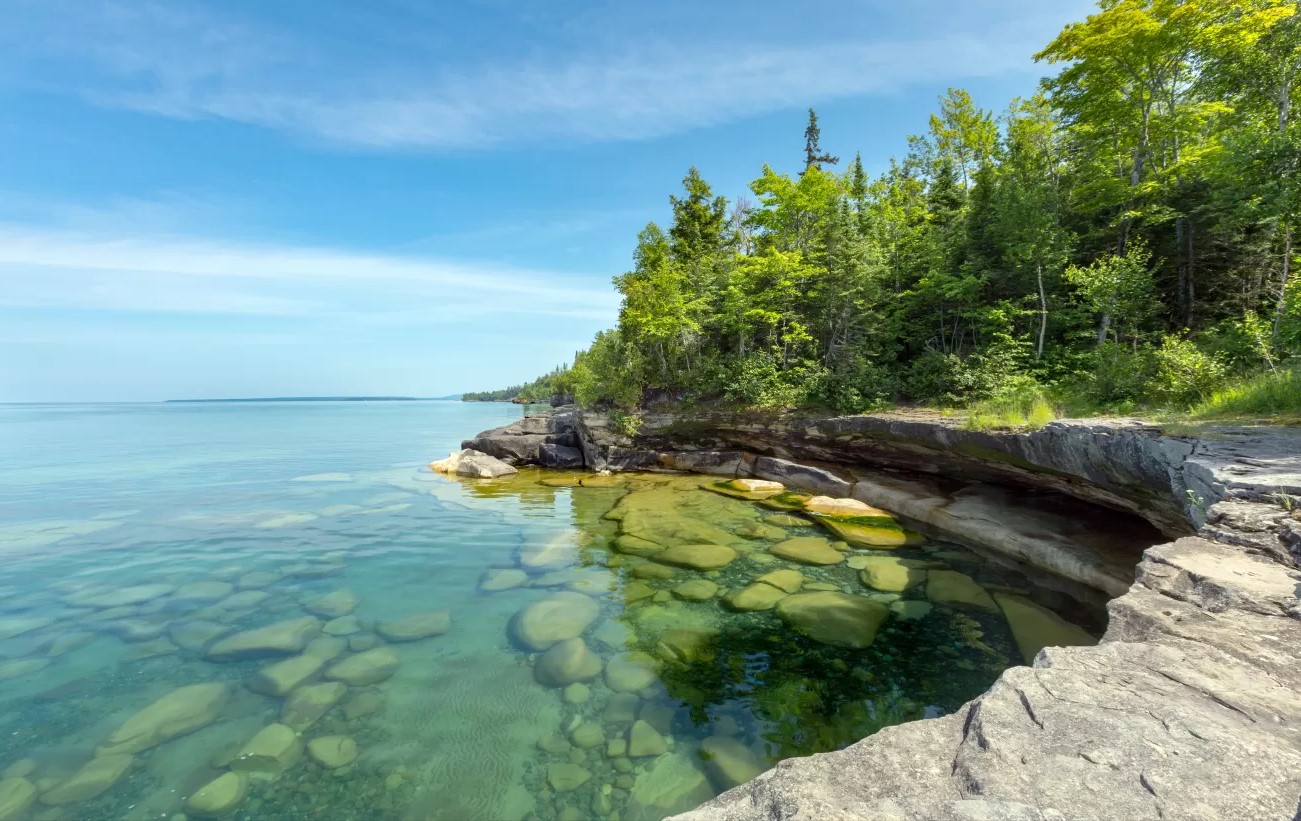
Ever wondered what secrets lie beneath the waves of Lake Superior? This vast body of water, holding more mysteries than any other, is not just another lake. It's a world of its own, with tales that could send shivers down your spine. Lake Superior isn't merely known for its size but for the chilling facts that surround it. From shipwrecks that whisper tales of old to waters that are deceivingly treacherous, this lake has stories that are begging to be told. Why does it captivate so many? Could it be its icy waters, or perhaps the legends that lurk beneath? Let's dive into the 20 most chilling facts about Lake Superior and uncover what makes this lake not only superior by name but also superior in mystery. Ready to be amazed and possibly a bit spooked? Let's get started!
Key Takeaways:
- Lake Superior is the largest freshwater lake by surface area, holding 10% of the world's fresh surface water. Its history, diverse ecosystem, and unique weather patterns make it a natural wonder worth protecting.
- From shipwrecks to northern lights, Lake Superior offers endless opportunities for adventure and relaxation. Conservation efforts are crucial to preserving its beauty and resources for future generations.
What Makes Lake Superior So Unique?
Lake Superior, the largest of the Great Lakes of North America, holds secrets and stories that span centuries. Its vastness and depth create a natural wonder that has fascinated people for generations. Lake Superior is not just another lake; it's a natural phenomenon that commands respect and admiration.
-
Lake Superior is the world's largest freshwater lake by surface area, covering approximately 31,700 square miles. This makes it larger than the entire state of South Carolina!
-
With depths reaching over 1,300 feet, it's also one of the deepest freshwater lakes on the planet. This depth contributes to its cold temperatures, with average water temperatures around 40°F, rarely warming up even in summer.
-
The lake holds about 10% of the world's fresh surface water. To put that into perspective, it's enough water to cover both North and South America in a foot of water.
Historical Significance of Lake Superior
Lake Superior's history is as deep and vast as the lake itself. From indigenous cultures to European explorers, many have traversed its waters, leaving behind a rich tapestry of history and lore.
-
Indigenous peoples have lived along its shores for thousands of years, with the Ojibwe, Cree, and Nipissing among the tribes calling this area home.
-
The lake was a crucial part of the fur trade in the 17th and 18th centuries, serving as a key waterway for traders and explorers.
-
Shipwrecks are a somber part of Lake Superior's history, with over 350 shipwrecks recorded. The cold, fresh water preserves these wrecks better than saltwater, making it a fascinating site for underwater exploration.
The Ecosystem of Lake Superior
The ecosystem of Lake Superior is both diverse and delicate, supporting a wide range of species and habitats.
-
Despite its cold temperatures, Lake Superior is home to over 80 species of fish, including lake trout and whitefish, which are significant both ecologically and economically.
-
The lake's shores and islands provide nesting sites for over 200 species of birds, making it an important area for bird watching and conservation.
-
Pollution and invasive species pose significant threats to Lake Superior's delicate ecosystem. Efforts are ongoing to protect this vital natural resource.
Weather Patterns and Natural Phenomena
Lake Superior's size and location contribute to its unique weather patterns, which can be both beautiful and deadly.
-
The lake creates its own weather, with fog, sudden storms, and the infamous "Lake Superior Effect" snowfall, which can dump several feet of snow in a single day.
-
Auroras, or northern lights, are a breathtaking sight over Lake Superior, especially in the less populated northern regions.
-
Microclimates along the lake's shore can result in significant temperature differences over short distances, affecting local flora and fauna.
Recreational Activities on Lake Superior
The vastness of Lake Superior offers endless opportunities for adventure and relaxation.
-
Kayaking and canoeing are popular activities, allowing explorers to navigate the lake's clear waters and discover its secluded coves and islands.
-
Hiking trails along the shore offer stunning views of the lake and its surroundings, including the famous Pictured Rocks National Lakeshore.
-
Winter sports, such as ice fishing, snowmobiling, and skiing, take advantage of the lake's snowy season, providing fun and excitement even in the coldest months.
-
Lake Superior is a prime location for lighthouse enthusiasts, with over 40 lighthouses dotting its shores, each with its own story.
Conservation Efforts for Lake Superior
Protecting Lake Superior's natural beauty and resources is a priority for both local communities and environmental organizations.
-
Initiatives to combat invasive species, like the sea lamprey, are crucial for maintaining the health of the lake's ecosystem.
-
Pollution control measures are in place to reduce the impact of mining, industrial, and agricultural runoff into the lake.
-
Community-led beach cleanups and conservation projects help to preserve the lake's natural habitats for future generations.
-
Educational programs aim to raise awareness about the importance of Lake Superior and the need for ongoing conservation efforts.
A Final Dip into Lake Superior's Mysteries
Lake Superior, with its vast expanse and deep, cold waters, holds more than just water; it cradles history, mystery, and a touch of the unknown. From shipwrecks resting in its depths to the unique weather patterns it spawns, this lake's stories are as deep as its waters. Whether you're drawn by the tales of the Edmund Fitzgerald or fascinated by the natural wonders like the ice caves and sea stacks, Lake Superior never fails to intrigue. Remember, respect for this mighty lake's power ensures the safety of those who seek to explore its secrets. So, next time you stand by its shore, let the waves whisper their tales, and maybe, just maybe, you'll feel the chill of its mysteries brush against your skin.
Frequently Asked Questions
Was this page helpful?
Our commitment to delivering trustworthy and engaging content is at the heart of what we do. Each fact on our site is contributed by real users like you, bringing a wealth of diverse insights and information. To ensure the highest standards of accuracy and reliability, our dedicated editors meticulously review each submission. This process guarantees that the facts we share are not only fascinating but also credible. Trust in our commitment to quality and authenticity as you explore and learn with us.


